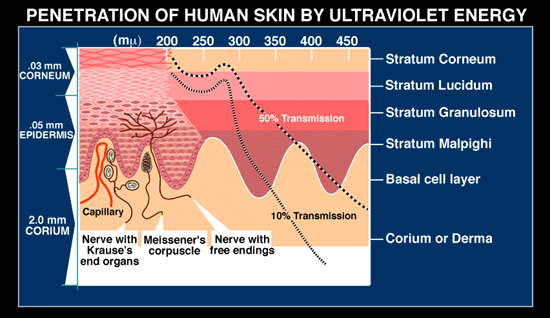To: jonrick46
Sure it can...and lung tissue is very thin and translucent.

Penetration of human skin by ultraviolet light
John L. Bezzant, M.D.
The longer the wavelength of light, the deeper the penetration of the light into the skin. Ultraviolet light is generally divided into ultraviolet C (200 to 280 nanometers), ultraviolet B (280 to 320 nanometers), and ultraviolet A (320 to 400 nanometers). Of the light that reaches the surface, ultraviolet B (mid-wavelength ultraviolet light) appears to be the most carcinogenic.
https://library.med.utah.edu/kw/derm/pages/meet_2.htm
To: amorphous
The type of UV light used for destroying harmful viruses safely in public areas, is called far-UVC light. It uses a narrower spectrum (207–222 nm) than the broad spectrum UVC light that is used to kill bacteria and viruses. UVC, because of its short wave length, also can penetrate human skin and cause cancer and cataracts. Because viruses and bacteria are much smaller than human cells, far-UVC light can reach their DNA and kill them. Far-UVC has a very limited range and cannot penetrate through the outer dead-cell layer of human skin or the tear layer in the eye, so it's not a human health hazard.
By the way, the higher the frequency, the shorter the wavelength: 
100 posted on
04/24/2020 12:15:57 AM PDT by
jonrick46
(Cultural Marxism is the cult of the Left waiting for the Mothership.)
To: amorphous
#81. Re skin color and UV energy/light. Why am I singing “Am I Blue”? Does it mean I’m off the color charts, i.e., “toast”?
FreeRepublic.com is powered by software copyright 2000-2008 John Robinson

